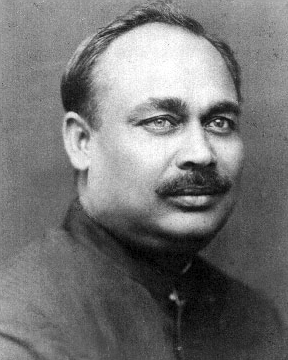Brief History of Biometric System
In ancient times about 40,000 years ago, men and women who lived in caves of Indonesia are documented to have the oldest cave painting of hand stencils. Some believe the reasons was they were to communicate and their fingerprints ‘have acted as unforgettable signatures of the originator’.

By 500BC the Babylonian and Egyptian merchants began to use fingerprints in clay tablets to settle business transactions. It was not until 1892 that a strong mathematical analysis of the index to uniquely classify fingerprint was developed.

In 1892, Azizul Hacque an Indian math student strong in statistics from presidency college, Calcutta was assigned to work under Edward Henry on the first fingerprint project for Calcutta police service of British India called Henry Classification System which we follow today.

Why do we need Biometric Systems?
- Biometric system helps authenticate the identity of an individual using his unique physiological, anatomical or behavioural markers, granting or limiting his access to what he legally have access to.
- Our dependence on the internet in today’s data-driven world has grown exponentially over the years that issues pertaining to security and privacy has always been a huge concern and under serious debate.
How do they work?
- Systems extract certain features from the scanned signal and feed them to a pattern recognition algorithm and compare with known templates of registered users.
- Biometric has grown as a field alongside the development of systems with computational capabilities which have increased exponentially over the last decade.
Challenges in Biometric Systems
- Biometric systems have evolved over the years thanks to the constant battle between cybercrime affecting globally and our growing need to protect various types of data today.
- Forging has reduced the reliability of systems.
- Some systems are more critical than the other and hence the slow evolution of such systems has limited the launch of the full functionality of certain applications due to security concerns.
- Some observations tell us that systems have difficulty identifying if the person is even dead or alive
Current Research Study on Heart for Biometric Application
- The human heart has been a symbol of intimacy and looks like recent research has proved they extend to our relationships with technology too.
- No two hearts are structurally similar and this geometric difference has paved a way to this much-needed technology.
- Authentication, in this case, is done by a low Doppler radar scan of the heart.
- The system is said to take 8 seconds to scan and hence are to be launched with applications limited to mobile phone and laptop access.
- The system grants access to the ones it is acquainted with and limits access to others.

The signal strength of the system’s radar “is much less than Wi-Fi,” and therefore does not pose any health threat, Xu said. “We are living in a Wi-Fi surrounding environment every day, and the new system is as safe as those Wi-Fi devices,” he said. “The reader is about 5 milliwatts, even less than 1 percent of the radiation from our smartphones.” Wenyao Xu, PhD, Assistant professor, Department of Computer Science and Engineering in UB’s School of Engineering and Applied Sciences.
- It overcomes many concerns over current Biometric systems in that the system ensures the person is alive, forging is impossible since it is dependent on the geometry of an internal organ and not a superficial layer like a fingerprint.
- The technology will be presented at the 23rd Annual International Conference on Mobile Computing and Communication (MobiCom) in Utah.
Sources
1. History of Biometric Systems
2. Henry Classification System
3. Worlds first fingerprinting bureau (In India)
4. Goodbye, login. Hello, heart scan
5. The Hindu Newspaper Clip – Radar Heart Scan for Biometric dated 07/10/2017
Reference
1. G. S. Sodhi and Jasjeet Kaur ’The forgotten Indian pioneers of fingerprint science’, Current Science, Vol. 88, No. 1, 10 January 2005
Acknowledgement
I would like to acknowledge Aarthi Veluswamy, M.Abthul Kareem, Priyadarsini R., Ranjana M.R.,
IV year Biomedical Engineering students, Dr.N.G.P. Institute of Technology, Coimbatore for their contribution towards identifying recent trends in this study.
